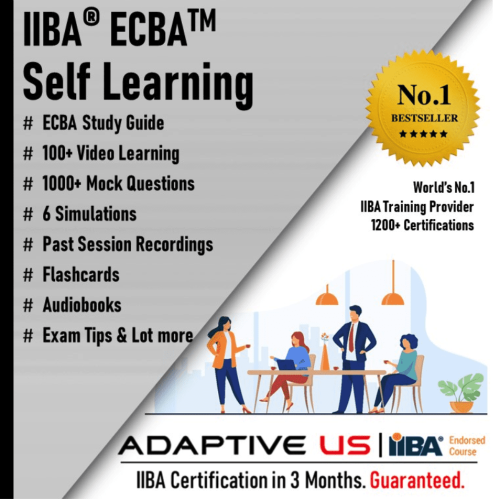The work of a business analyst is not possible without having proper and complete information and a clear picture of requirements within an organisation.
Obtained information and requirements lay a foundation for determining a solution that enables value to the organisation. This all means that eliciting information from stakeholders and collaborating with them based on that information to reach a common goal is one of the essential parts of a business analysts job.
Elicitation and collaboration are listed as one of the key knowledge areas in BABOK and they are among the most complex and important skills any business analyst should master. Due to its co-dependence with other business analysis areas, it’s critical for the overall success of the project.
Elicitation, in its essence, is a way of obtaining information from stakeholders to discover the requirements for the solution. It usually involves talking with stakeholders, researching, experimenting, brainstorming, and also reaching out to external sources for information. It exists simultaneously with other analysis tasks and any new information obtained may trigger further eliciting.
The collaboration in business analysis, as in everyday life, implies the joint work of a group of people towards a common objective. In this case, it stands for the cooperation of business analysts and stakeholders in identifying, understanding, and implementing all of the relevant information.
Elicitation and collaboration can be planned, such as prescheduled surveys and workshops, or unplanned, such as ad hoc conversations and exchange of opinions.
Table of Contents
Each of the BACCM core concepts
The BABOK
Prepare for Elicitation
Preparing for elicitation includes making sure that the stakeholders have the information the business analyst needs, and that they have a full understanding of the upcoming activities.
Elicitation preparation activities also involve setting the outcome expectations, organising surveys or experiments, and identifying sources of relevance for research. During this stage, the business analysts select the techniques to be used and procure necessary materials. Also, they determine the work products for which elicitation results will be used, establish elicitation logistics, and create all of the preconditions for a successful collaboration.
The primary inputs for elicitation preparation are the organisational needs that set the range and reasons for elicitation and stakeholder engagement approach which implies a full understanding of their roles, responsibilities, and communication needs. The output of preparing for elicitation should be an elicitation activity plan which is used for every upcoming elicitation task.
The key elements of elicitation preparation are:
- Understanding the Scope of Elicitation
- Selecting Elicitation Techniques
- Setting Up Logistics
- Securing Supporting Material
- Preparing the Stakeholders
Among the guidelines and tools that the business analyst will use to prepare elicitation the most important are business analysis approach, business objectives, existing business analysis information, and potential values. The key BA techniques of use are:
- Brainstorming
- Data Mining
- Document Analysis
- Estimation
- Interviews
- Mind Mapping
- Risk Analysis and Management
- Stakeholder List, Map, or Personas
The stakeholders of value when preparing elicitation are domain subject matter expert, project manager, and sponsor.
Conduct Elicitation
Conducting elicitation involves the work business analyst performs to better understand organisational needs and identifying solutions for those needs that will satisfy the stakeholders. While conducting elicitation, the BA explores and collects all of the vital information by interacting with stakeholders, experimenting, and doing research.
The three most common types of elicitation are collaborative elicitation, research, and experiments. Stakeholders’ participation and collaboration are crucial and they take part by providing information and interacting during elicitation and studying, researching, and offering feedback.
An elicitation activity plan is the main input for conducting elicitation. It provides details on elicitation activities and techniques, sources of information, and logistics and scope of the activity. The unconfirmed elicitation results are the expected output, containing information captured in the activity-specific format.
Conducting elicitation has two key elements:
- Guiding Elicitation Activity
- Capturing Elicitation Outcomes
Guidelines and tools that are used as the BAs conduct elicitation are business analysis approach, existing business analysis information, stakeholder engagement approach, and supporting materials. The most widely used techniques for conducting elicitation are:
- Benchmarking and Market
- Analysis
- Brainstorming
- Business Rules Analysis
- Collaborative Games
- Concept Modelling
- Data Mining
- Data modeling
- Document Analysis
- Focus Groups
- Interface Analysis
- Interviews
- Mind Mapping
- Observation
- Process Analysis
- Process Modelling
- Prototyping
- Survey or Questionnaire
- Workshops
The key stakeholders in this phase of the business analysis process are customer, domain subject matter expert, end-user, implementation subject matter expert, sponsor, and any other stakeholders with relevant knowledge.
Confirm Elicitation Results
The task of confirming elicitation results is to verify information obtained during the process and compare it with other available information to check for consistency.
The business analyst has to make sure that the stakeholders properly understand elicitation outcomes and check if the information is recorded and stored properly. Confirmed results should help determine potential problems and solve them before moving on to other parts of the analysis process that will use the obtained information.
Any errors, inconsistencies, and ambiguities should be resolved. If the elicited information is found to be flawed, the business analyst may need to elicit more information to rectify the situation. Investing further resources in the business analysis based on incorrect information may result in failing to accomplish the stakeholders’ desired results.
The main input when confirming the elicitation results are the unconfirmed elicitation results themselves obtained in the previous task. The confirmed elicitation results are the desired output and they should reflect the collected information and verify its relevance.
The task of confirming elicitation results involves two main elements:
- Comparing Elicitation Results Against Source Information
- Comparing Elicitation Results Against Other Elicitation Results
During elicitation results, confirmation business analysis can rely on guidelines and tools such as elicitation activity plan and existing business analysis information. The techniques usually used are:
- Document Analysis
- Interviews
- Reviews
- Workshops
The elicitation results confirmation involves domain subject matter expert and also require the input from all of the other stakeholders.
Communicate Business Analysis Information
To communicate business analysis information means to timely provide stakeholders with the relevant information. The goal of this task is to make sure that all of the stakeholders fully understand and have all of the available information. Using the agreed terminology and concepts, the information is communicated clearly and unambiguously. When conveying the information, business analysts must pay attention to the tone and style of communication. Precisely identified recipients, purpose, content, and context of communication are crucial for it to be successful and useful. The BAs also receive information from stakeholders and act on any disagreements.
The two main inputs needed for proper communication are business analysis information and stakeholder engagement approach. This task is expected to provide output in the form of communicated business information which means that all of the stakeholders have received and understood the full context and implications of the information in question.
The main elements of communicating business analysis information are:
- Determination of Objectives and Format of communication
- Communicating Business Analysis Package
Guidelines and tools business analysts commonly use while performing this task are business analysis approach and information management approach. The BA techniques useful for communicating business analysis information are:
- Interviews
- Reviews
- Workshops
The stakeholders of interest in this stage are end-user, customer, domain subject matter expert, implementation subject matter expert, tester, and all other stakeholders who will most likely be part of communication.
Manage Stakeholder Collaboration
Managing stakeholder collaboration implies engaging them in the business analysis process in a way that helps the analysts deliver desired outcomes. Managing collaboration is all about stimulating stakeholders to work together to accomplish a common goal.
Opportunities for collaboration occur throughout the business analysis process and they provide a clear picture of possible constraints, needs, and assumptions. It’s essential that all of the stakeholders perform their expected roles in the right stage of the overall business analysis.
Collaboration is not a one-time activity, it goes on as long as the project lasts with the occurrence of new stakeholders with each analysis task. Poor relationships between stakeholders and between the stakeholders and analysts professionals can hinder the progress of the project and result in failing to deliver desired outcomes.
The primary inputs for this business analysis tasks are stakeholder engagement approach and business analysis performance assessment. the output of stakeholder collaboration management is the stakeholder engagement – readiness of the stakeholders to engage, interact, and participate in business analysis activities.
The elements of managing stakeholder collaboration are:
- Gaining Agreement on Commitments
- Monitoring of Stakeholder Engagement
- Collaboration
Useful guidelines and tools at this phase of analysis are business analysis approach, business objectives, future state description, recommended actions, and risk analysis results. Managing stakeholder collaboration is conducted with the help of following BA techniques:
- Collaborative Games
- Lessons Learned
- Risk Analysis and Management
- Stakeholders List, Map, or
- Personas
This task includes all stakeholders as they all can be involved in collaboration during the change at one stage or the other.
Conclusion – Elicitation And Collaboration
Elicitation and collaboration is listed as one of the important knowledge areas in BABOK guide for business analysis.
Elicitation, is a way of obtaining information from stakeholders to discover the requirements for the solution. Collaboration in business analysis implies the joint work of a group of people towards a common objective.
Regardless of whether you working on traditional or agile ways of working there is a need to elicit needs and requirements from stakeholders and to collaborate effectively with them.
Learn more about the other IIBA business analysis knowledge areas:
- Business Analysis Planning and Monitoring
- Requirements Life Cycle Management
- Strategy Analysis
- Requirements Analysis and Design Definition
- Solution Evaluation




